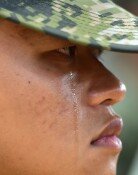[Opinion] Oh Gubooksun!
The metal fabrication developments, Hangul, and the Gubooksun (a turtle shaped steelship), are our nations unique inventions. Hunminjungum is the conclusive evidence for Hangul, which Gansong Jun Hyung-pil(1906~1962) discovered in an old house in Andong, Geyongbuk, in 1940, and the metal printing type is evidence that the National Library of France has in its collection. However, Gubooksun, which is presumed to be the worlds first ironclad ship for attacking, is the one invention that doesnt have actual or conclusive evidence yet.
There is controversy surrounding Gubooksun. Some claim that the ship is not an authentic ironclad warship because it is not completely covered with metal armor, while others have the opinion that the ship is actually a combination of two ships of two or three stories. The turtle ship appears on records starting from King Taejong of the Chosun Dynasty, past the Japanese Invasion of Korea in 1592, to the reign of King Chungjo in the 18th century. It is known that at the time of the Japanese Invasion of Korea in 1592, the turtle ship was constructed under General Lee Sun-shins command. Three more ships were constructed at the beginning of the Japanese Invasion of Korea in 1592, but it is not sure how many ships were made after that.
The first person to utilize Gubooksun in business was Jung Joo-young, the late former president of Hyundai. In September, 1971, Mr. Jung visited the president of A&P Appledore, Longbattom, to ask for a loan for the establishment of a dockyard. As he didnt get an acceptable answer, he pulled out a 500-won note and said, There is Gubooksun drawn on this bill. Korea was the country that made the worlds first ironclad ship in the 1500s. It was 300 years earlier than your country. President Longbattom approved of president Jungs passion and potential for Korean shipbuilding, and positively recommended him for a loan.
An ancient painting and writings from the 17th century that describe the actual specifications of Gubooksun has become an issue because it has been open to public in the United States. What is interesting is that this drawing is sketched in a form of a three-story structure instead of a two-story structure, which is roughly sketched on a book titled, The Complete Book of General Lee Soon-shin. The back of Gubooksun, which is an oval shape almost close to a circle, and walkable on top, is also unique. Although it is hard to interpret the signs by eye, it is told that the details of Gubooksun are also recorded faintly on the lower left side of Gubooksuns size. I hope that the turtle ship reveals itself following ancient drawings out of somewhere in the southern sea of Korea, and give hope and pride to its descendants that are living in troubling times.
Oh Myung-chul, Editorial Writer oscar@donga.com







